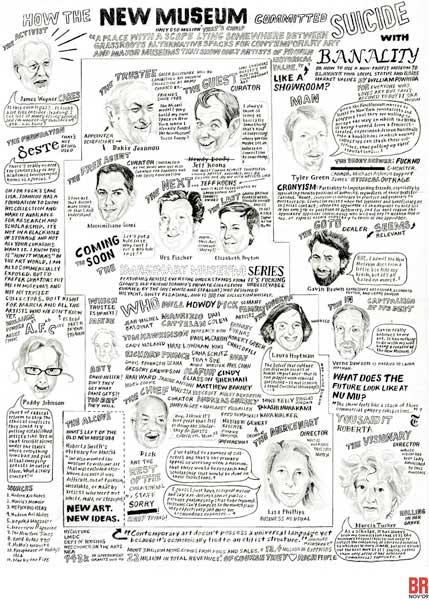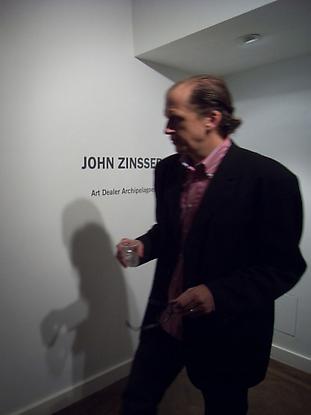
William Powhida, How the New Museum Committed Suicide with Banality, cover art, Brooklyn Rail, November 2009
(For a larger, more legible image, click here.)
----------------------
December 25, 2009. The Brooklyn Rail, founded in 1998, is a scrappy, independent cultural/political broadsheet that covers issues in Brooklyn's waterfront neighborhoods (Williamsburg, Greenpoint, DUMBO, Red Hook) from a politically progressive vantage point. It publishes poetry and fiction and reviews local developments in music, film, dance, theater and books. Most significantly, it provides passionate, detailed, idiosyncratic coverage of the NY arts scene in each and every issue, with a full roster of exhibition reviews, feature articles and long, in-depth "conversations" with artists. Under publisher Phong Bui, it has developed an essential and original voice, and is part of my regular reading list. [Full disclosure: James Kalm, who maintains an ongoing video blog here at post.thing.net, has also contributed regularly to the Rail.]
Viewable online, distributed for free at certain bookstores and alt.culture locations, and also available by subscription, the Rail has a relatively small circulation (around 7,500). Even so, it regularly engages in adventurous promotional efforts normally the province of larger publications; for example, the printing of multiple covers for certain issues to better showcase the artists and contents within.
A case in point: the three different covers of the November 2009 issue. The one I have at home features an image from a Carroll Dunham painting. I understand there was also a Helmut Federle cover. (Both artists had solo shows in NY that month and are interviewed in the November Rail.) However, it is the third cover choice I wish to address here, a b/w drawing by artist, activist, satirist and draftsman William Powhida, executed in full caricature/agitprop mode (and pictured above), in which he addresses cronyism at the New Museum in gleeful, graphic, subversive detail.








 De La Cruz Collection, facade
De La Cruz Collection, facade

